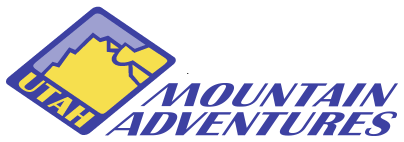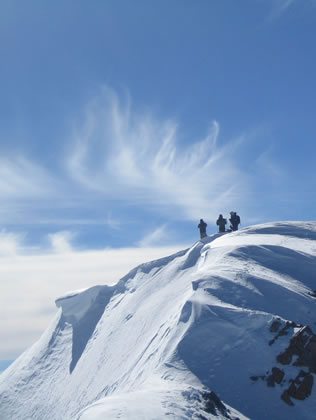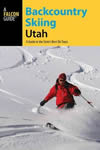Utah Alpine Climbing Guides Private Guiding & Instruction - Utah Mountaineering
Frequently Asked Questions - Mountaineering
What type of Crampons should I use?
10-point, hinged, flexible, lash-on spikes made of light metal (including aluminum) are ideal, and adaptable to almost any boot. Step-in crampons are fine, but they won't fit on softer boots that lack heel and toe rands for attachment. 12-point water-ice crampons are fine, but heavier than necessary.
What type of Ice Axe and Leash is best?
A mountaineering axe usually has a straight shaft (as opposed to the radically curved shafts and reverse-droop picks designed specifically for water-ice and mixed climbing.) Some newer mountaineering axes include a bend only in the upper shaft, and this is fine. Preferable length is 50-75 cm.
Given that many Wasatch routes are on a mix of rock, ice, and snow, a shorter axe is easier to stow for pure rock moves. For this reason, a RETAINER leash connected to the harness is required so the tool can't be dropped. The best type is a 5' long, single-strand of 1/2" webbing attached with a water knot on the pick side of the axe head. Wrist loops are for steep ice, and NOT helpful for mountaineering.
How much experience do I need for the South Ridge of Superior?
This is an "Alpine-style," intermediate to advanced climb. Ice-axe and crampon experience is helpful for winter and spring ascents. Rock-climbing or scrambling background and comfort with exposure is important in any season. The climber needs to be fit enough to handle 3,000 feet of ascent, mostly on technical class 3 & 4 terrain. Deep, unconsolidated snow makes the climb considerably more physically demanding.
Can I ski off the top of Superior?
Ski descents of Superior's highly visible South Face are very popular, and UMA does guide this and other steep, challenging ski lines when conditions are right. However, carrying skis (or a snowboard) make climbing the South Ridge MUCH harder. We recommend climbing the East Ridge or Cardiac Bowl if a ski descent is sought.
In order to ski Mt. Superior, UMA requires that the participant has gone out with UMA previously in order to be comfortable in the assessment of their capability. Skiing from the summit into Cardiac Bowl or Mill B South is a safer, more benign option.
Does UMA offer multi-pitch rock mountaineering climbs?
Yes, there are many excellent rock routes in the higher terrain. The Sundial -- above Lake Blanche in Big Cottonwood Canyon -- and Arm and Hammer in Bells Canyon are two of the more popular climbs. These are aesthetic, intermediate to advanced routes needing solid fitness and rock-climbing skills. They are described in more detail on the rock-climbing page.
Contact UMA if you have any questions:
Call (801) 550-3986 or email us at uma@UtahMountainAdventures.com
Utah Mountain Adventures
P.O. Box 521809
Salt Lake City, Utah 84152-1809
Phone: (801) 550 3986
Fax: (801) 486 8505









